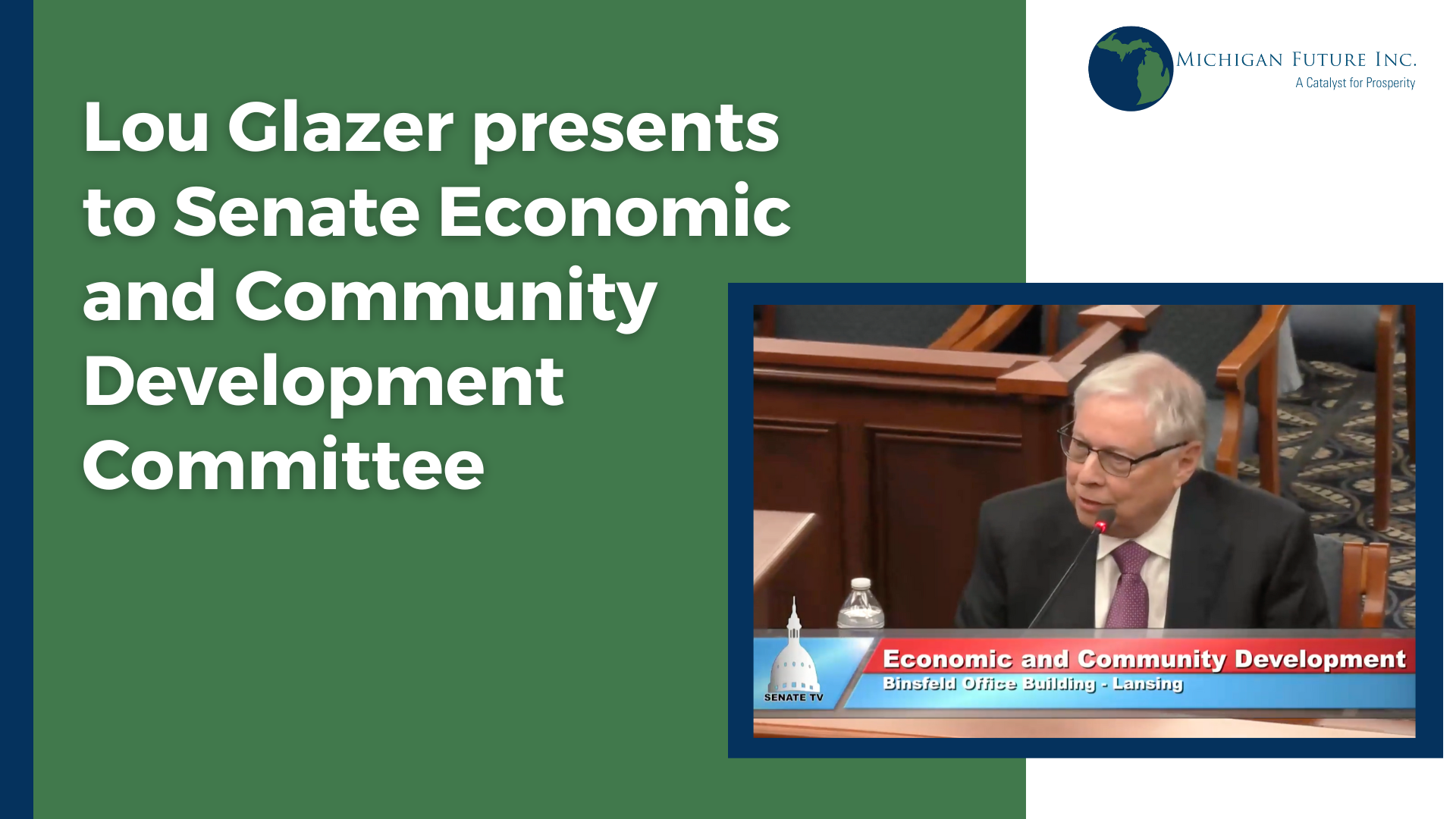
If Michigan had the same share of middle-class jobs as Massachusetts, it would be the equivalent of adding nearly 800,000 middle-class jobs to the state economy. Michigan––a state that once attracted people from across the planet to get high-wage jobs––is now a state where seven in ten Michigan jobs pay less than middle-class wages ($65,000 and above). In Massachusetts five in ten jobs pay middle-class wages.
What accounts for this 800,000 high-wage jobs gap? Overwhelmingly it is a much higher B.A. attainment rate. High prosperity states and regions, first and foremost, are places with a high proportion of adults with a bachelor’s degree or more.
Massachusetts is the nation’s most prosperous state primarily because it has great schools and a talent magnet city. The best K-12 system in the country, great four-year universities, plus a city where recent college grads want to stay and come from elsewhere to live after college.
Schools and cities are the foundation of prosperous states and regions. This is an economy where college educated talent attracts capital. And vibrant cities attract college educated talent. Michigan unfortunately has neither and it has become one of the nation’s poorest states.
Where talent––particularly young talent––goes, high-growth, high-wage, knowledge-based enterprises follow, expand, and are created. Because talent is the asset that matters most to high-wage employers and is in the shortest supply, the new path to prosperity is concentrated talent.
All the traditional items we consider to be vital to economic development and state and regional prosperity––business taxation, the regulatory regime, business assistance programs and incentives, entrepreneurship and growing business supports, technology transfer, sub B.A. post secondary training, on and on and on––are not what distinguishes Massachusetts from other states.
What does distinguish Massachusetts from us and other states is the proportion of adults––particularly young adults––with a B.A. or more. Massachusetts is first in the nation in both categories. In Massachusetts, 47.8 percent of adults over the age of 25 have a bachelor’s degree or higher. In Michigan 32.7 percent. This picture gets worse when you look at young people. 57.2 percent of 25-to-34-year-olds in Massachusetts have a bachelor’s degree or higher. In Michigan 37 percent. The B.A. attainment gap between the two states is widening, not shrinking.
This large B.A. attainment gap leads to a large prosperity gap. In Massachusetts the per-capita income is $93,927. In Michigan, a low B.A. attainment and low-prosperity state, the per-capita income is $63,221––a full $30,000 lower than Massachusetts.
In 1980, the two states had roughly the same per-capita income. But a large prosperity gap grew over time, both because the B.A. attainment gap between the two states grew, and because the B.A. wage premium has grown.
The lesson Massachusetts should teach us is if Michigan does not substantially increase its B.A. attainment rate––particularly among non-affluent students––and create talent magnet cities, we will continue to get poorer compared to the nation no matter how good everything we label economic development is. Schools and cities are the foundation of prosperous places, everything else at best is icing on the cake.
What we have been doing to increase the economic well-being of Michiganders has not worked. A small course correction will not be sufficient––transformational change in our approach to the economy and education is required if we are to achieve an economy that as it grows benefits all.
To create a high-wage Michigan economy we, first and foremost, need to strengthen and create more vibrant neighborhoods in our cities that attract and retain young talent and we need great schools explicitly designed to increase the share of young Michiganders who pursue and complete a four-year degree.
All of this adds up to the reality that there are two high-impact levers available to state policymakers to reverse Michigan’s decades-long economic well-being decline:
- First, create transit-rich, vibrant central cities that are competitive with America’s young adult talent magnet regions.
- Second, create schooling from birth through college that substantially increases Michigan student’s four-year degree attainment.
If Michigan does not concentrate college educated Generation Z here, and does not substantially increase four-year degree attainment of Michigan students––our state will continue to get poorer compared to the rest of the nation.
Getting younger and better educated requires making bold public investments in place and education––the drivers of today’s economy. The alternative is clear: Michigan will continue to get older and poorer.







